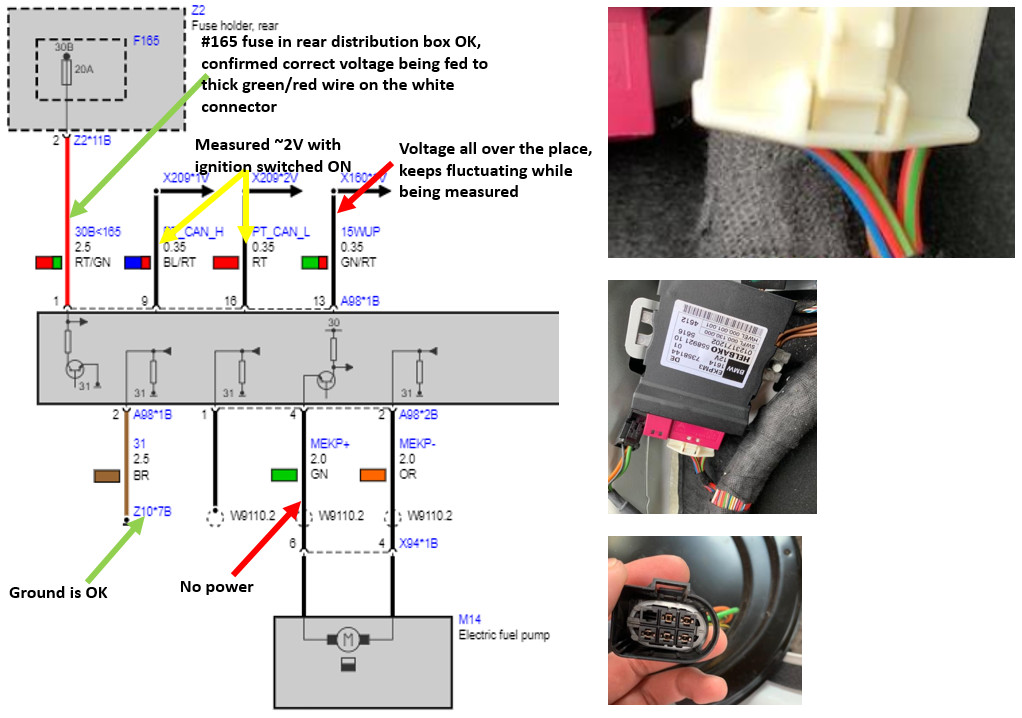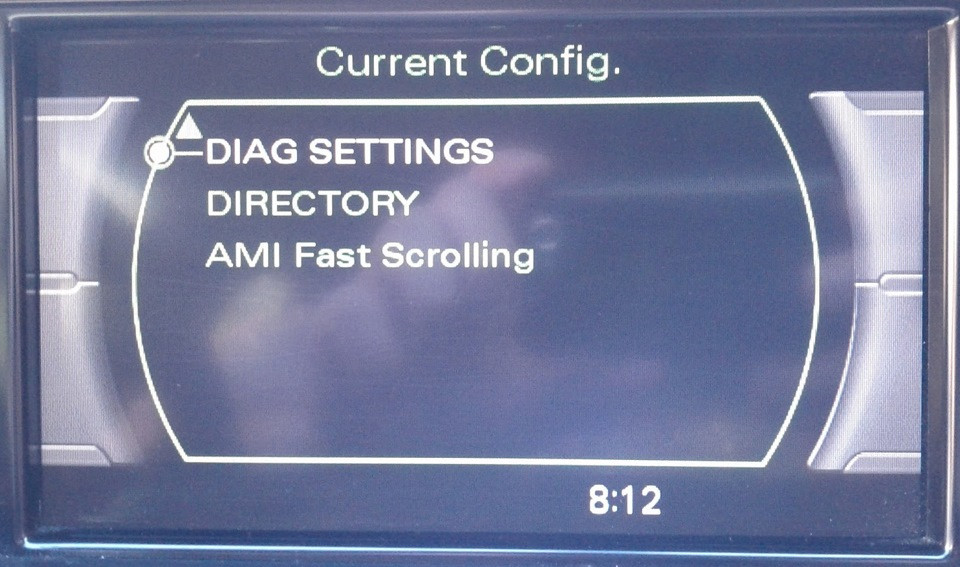
What Does BMW 2DC6 Code Mean And How To Fix It?
The BMW 2DC6 code indicates a problem within the vehicle’s Valvetronic system, specifically affecting the power supply to the engine management system. Solving the 2dc6 Bmw Code problem involves diagnosing and repairing issues within the Valvetronic system, potentially including the Integrated Supply Module (IVS), Digital Motor Electronics (DME), or related wiring. AutoExplain.com excels in remote automotive diagnostics and software solutions, offering expert assistance to address such intricate BMW issues, ultimately providing efficient fixes and avoiding future diagnostic headaches.
1. What is the BMW 2DC6 Fault Code?
The BMW 2DC6 fault code signifies an issue with the power supply to the engine management system, often related to the Valvetronic system. The 2DC6 BMW code typically points to a problem with the Integrated Supply Module (IVS), which could lead to insufficient power delivery to vital engine components.
1.1 How does the Valvetronic system affect the 2DC6 code?
The Valvetronic system, which controls valve lift, relies on a consistent power supply. When the IVS malfunctions, it can trigger the 2DC6 code due to the system’s inability to provide the required voltage to the DME and other components, potentially causing issues like a no-start condition or poor engine performance.
1.2 What role does the Integrated Supply Module (IVS) play in the 2DC6 error?
The Integrated Supply Module (IVS) acts as a central power distribution unit for critical engine components, including the DME, ignition coils, and Valvetronic system. When the IVS fails or encounters problems, it can disrupt the power supply, leading to the 2DC6 error code.
2. What are the Common Causes of the 2DC6 BMW Code?
The 2DC6 BMW code can stem from a variety of issues related to power supply and system components. Common causes include a faulty Integrated Supply Module (IVS), DME failure, wiring issues, or problems within the Valvetronic system itself.
2.1 How does a faulty Integrated Supply Module (IVS) trigger the 2DC6 code?
A faulty IVS can trigger the 2DC6 code by failing to deliver the correct voltage or current to the DME and other essential components. This can result from internal component failure, corrosion, or damaged connections, leading to an insufficient power supply.
2.2 Can DME failure lead to the 2DC6 error code?
Yes, a failing DME can cause the 2DC6 error code. If the DME malfunctions, it may not properly energize the relays inside the IVS or communicate correctly with other modules, leading to power supply issues.
2.3 What wiring issues commonly cause the 2DC6 fault code?
Wiring issues such as corroded connections, damaged wires, or loose terminals can disrupt the power supply to the DME and Valvetronic system, causing the 2DC6 fault code.
3. What are the Symptoms Associated with the 2DC6 BMW Code?
Symptoms of the 2DC6 BMW code can range from minor performance issues to complete engine failure. Common symptoms include a no-start condition, poor engine performance, reduced power, and other related error codes.
3.1 Why does the 2DC6 code often result in a no-start condition?
The 2DC6 code often results in a no-start condition because the DME isn’t receiving the necessary power to control essential engine functions, such as fuel injection and ignition timing. Without adequate power, the engine cannot start.
3.2 How does the 2DC6 error affect engine performance?
The 2DC6 error can negatively affect engine performance by causing the engine to run erratically, misfire, or experience reduced power. This is because the DME, which controls critical engine functions, isn’t receiving a stable and sufficient power supply.
3.3 What other error codes are commonly seen with the 2DC6 BMW code?
Other error codes commonly seen with the 2DC6 BMW code include 2DB6 (IVS system fault), codes related to the Valvetronic system, and codes indicating issues with ignition coils and fuel injectors. These codes often appear together due to the interconnected nature of the power supply and engine management systems.
 BMW DME
BMW DME
4. How to Diagnose the BMW 2DC6 Error Code?
Diagnosing the BMW 2DC6 error code involves a systematic approach to identify the root cause. Key steps include using diagnostic tools to read fault codes, checking the IVS and DME, inspecting wiring and connections, and testing the Valvetronic system.
4.1 What diagnostic tools are needed to read the 2DC6 fault code?
To read the 2DC6 fault code, you’ll need an OBD-II scanner or a BMW-specific diagnostic tool such as ISTA (Integrated Service Technical Application). These tools can communicate with the vehicle’s computer to retrieve stored fault codes and provide additional diagnostic information.
4.2 How to check the Integrated Supply Module (IVS) for faults?
To check the IVS for faults, start by visually inspecting it for any signs of damage, corrosion, or loose connections. Use a multimeter to test the input and output voltages, ensuring they are within the specified range. If the voltages are incorrect, the IVS may be faulty and require replacement.
4.3 What steps should be taken to inspect wiring and connections?
Inspect the wiring and connections related to the IVS and DME for any signs of damage, corrosion, or looseness. Check the wiring harness for breaks or shorts, and ensure all connectors are securely attached. Use a wiring diagram to trace the circuits and verify continuity.
4.4 How to test the Valvetronic system for issues related to the 2DC6 code?
To test the Valvetronic system, use a diagnostic tool to monitor the Valvetronic motor’s operation and check for any error codes specific to the system. Verify that the motor is receiving the correct voltage and that its position sensor is functioning correctly. If the Valvetronic system is not operating correctly, it may be contributing to the 2DC6 code.
5. How to Fix the BMW 2DC6 Fault Code?
Fixing the BMW 2DC6 fault code requires addressing the underlying cause, which may involve replacing a faulty IVS, repairing or replacing damaged wiring, or addressing DME issues. A systematic approach ensures that the problem is fully resolved.
5.1 How to replace a faulty Integrated Supply Module (IVS)?
To replace a faulty IVS, disconnect the negative battery cable and locate the IVS module. Disconnect all electrical connectors from the IVS, remove any mounting hardware, and carefully remove the old IVS. Install the new IVS, ensuring all connectors are securely attached, and reinstall the mounting hardware. Reconnect the negative battery cable and use a diagnostic tool to clear any fault codes.
5.2 What is involved in repairing or replacing damaged wiring?
Repairing or replacing damaged wiring involves identifying the affected wires, removing any damaged sections, and splicing in new wire using appropriate connectors. Ensure the connections are secure and properly insulated to prevent corrosion and future issues. If the wiring harness is extensively damaged, it may be necessary to replace the entire harness.
5.3 How to address DME-related issues causing the 2DC6 code?
Addressing DME-related issues may involve reprogramming or replacing the DME. If the DME is suspected to be faulty, consult with a qualified technician to perform diagnostic tests and determine if reprogramming or replacement is necessary. Ensure the replacement DME is properly coded to the vehicle to ensure proper operation. AutoExplain.com offers remote programming services to assist with DME issues.
5.4 What are the steps to clear the 2DC6 code after repair?
After completing the necessary repairs, use a diagnostic tool to connect to the vehicle’s computer and clear the 2DC6 fault code. Verify that the code does not reappear after clearing it and test the vehicle to ensure proper operation.
6. How to Prevent the 2DC6 BMW Code?
Preventing the 2DC6 BMW code involves regular maintenance, addressing electrical issues promptly, and ensuring proper battery maintenance. Proactive measures can help avoid future problems and maintain your vehicle’s performance.
6.1 What regular maintenance can prevent the 2DC6 error?
Regular maintenance that can prevent the 2DC6 error includes inspecting and cleaning electrical connections, monitoring battery health, and ensuring proper grounding. Additionally, regularly checking the IVS and DME for any signs of corrosion or damage can help prevent future issues.
6.2 How important is addressing electrical issues promptly?
Addressing electrical issues promptly is crucial to preventing the 2DC6 code. Small problems like loose connections or damaged wires can quickly escalate into major issues affecting the power supply to critical engine components. Early detection and repair can save time and money in the long run.
6.3 What battery maintenance is essential for preventing the 2DC6 fault code?
Essential battery maintenance includes keeping the battery terminals clean and free of corrosion, ensuring the battery is properly charged, and replacing the battery when it reaches the end of its lifespan. A weak or failing battery can cause voltage fluctuations that trigger the 2DC6 code.
7. What are the Long-Term Consequences of Ignoring the 2DC6 Code?
Ignoring the 2DC6 code can lead to significant long-term consequences, including engine damage, increased repair costs, and potential safety hazards. Addressing the issue promptly is essential to maintaining the vehicle’s reliability and performance.
7.1 How can ignoring the 2DC6 error lead to engine damage?
Ignoring the 2DC6 error can lead to engine damage because the power supply issues can cause the engine to run erratically or misfire, potentially damaging internal components. Inconsistent power can also lead to premature wear and tear on critical engine systems.
7.2 What increased repair costs can result from neglecting the 2DC6 code?
Neglecting the 2DC6 code can result in increased repair costs due to the potential for more extensive damage to the engine and electrical systems. What starts as a simple power supply issue can escalate into costly repairs involving the DME, IVS, or other components.
7.3 What potential safety hazards are associated with the 2DC6 BMW code?
Potential safety hazards associated with the 2DC6 BMW code include unexpected engine stalling, reduced power, and erratic engine behavior. These issues can compromise the vehicle’s safety and increase the risk of accidents.
8. How Can AutoExplain.com Help with Your BMW 2DC6 Code?
AutoExplain.com offers specialized remote automotive diagnostic and software solutions, perfect for addressing intricate issues like the BMW 2DC6 code. Our expert team is equipped to provide rapid and effective solutions, ensuring your vehicle returns to optimal performance swiftly and reliably.
8.1 What remote diagnostic services does AutoExplain.com provide for the 2DC6 code?
AutoExplain.com provides comprehensive remote diagnostic services, utilizing advanced tools to accurately pinpoint the root cause of the 2DC6 code. Our detailed analysis helps identify whether the issue stems from a faulty IVS, wiring problems, or DME malfunction.
8.2 How does AutoExplain.com support software solutions for BMW vehicles?
AutoExplain.com offers cutting-edge software solutions, including DME reprogramming, to resolve the 2DC6 code. Our experts ensure seamless integration and optimal performance by remotely updating or reconfiguring your vehicle’s software.
8.3 What expertise does AutoExplain.com offer in BMW electrical systems?
AutoExplain.com boasts a team of experts specializing in BMW electrical systems, equipped to tackle complex issues like the 2DC6 code. Our in-depth knowledge ensures thorough diagnostics and effective repairs, keeping your BMW running smoothly.
8.4 What are the benefits of using AutoExplain.com for remote car repair assistance?
Choosing AutoExplain.com for remote car repair assistance offers numerous benefits, including rapid diagnostics, expert solutions, and reduced downtime. Our remote services save you time and money by eliminating the need for in-person visits, ensuring efficient and reliable repairs.
9. Real-World Case Studies: Resolving the 2DC6 BMW Code
Examining real-world case studies provides valuable insights into how the 2DC6 BMW code is diagnosed and resolved. These examples highlight the importance of systematic diagnostics and the effectiveness of expert intervention.
9.1 Case Study 1: Diagnosing and repairing a 2DC6 code in a BMW 3 Series
In one case, a BMW 3 Series exhibited a no-start condition accompanied by the 2DC6 code. Through remote diagnostics, AutoExplain.com identified a faulty IVS. After replacing the IVS and clearing the code, the vehicle returned to normal operation, demonstrating the effectiveness of targeted diagnostics and component replacement.
9.2 Case Study 2: Addressing wiring issues causing the 2DC6 error in a BMW 5 Series
Another case involved a BMW 5 Series with intermittent engine performance issues and the 2DC6 error. AutoExplain.com’s remote analysis revealed corroded wiring connections to the DME. Repairing the wiring and ensuring secure connections resolved the issue, highlighting the importance of thorough wiring inspections.
9.3 Case Study 3: Resolving a DME malfunction triggering the 2DC6 code in a BMW X5
A BMW X5 presented the 2DC6 code along with other DME-related errors. AutoExplain.com determined that the DME was malfunctioning and required reprogramming. After remotely reprogramming the DME, the vehicle’s performance was restored, illustrating the value of advanced software solutions.
10. FAQs: Understanding and Troubleshooting the BMW 2DC6 Code
This FAQ section addresses common questions related to the BMW 2DC6 code, providing additional insights and troubleshooting tips to help you better understand and resolve this issue.
10.1 Can I fix the 2DC6 BMW code myself, or do I need a professional?
While some basic troubleshooting steps can be performed by yourself, diagnosing and repairing the 2DC6 BMW code often requires professional expertise. Complex issues like DME malfunctions or intricate wiring problems are best handled by experienced technicians.
10.2 How much does it typically cost to fix the 2DC6 error?
The cost to fix the 2DC6 error can vary depending on the underlying cause and the required repairs. Replacing the IVS or repairing wiring issues may cost several hundred dollars, while DME replacement or reprogramming can be more expensive. Contact AutoExplain.com for an accurate estimate.
10.3 What is the typical lifespan of the Integrated Supply Module (IVS) in a BMW?
The typical lifespan of the IVS in a BMW can vary, but it generally lasts between 80,000 to 120,000 miles. Factors such as environmental conditions and vehicle usage can affect its longevity.
10.4 How can I check if my BMW battery is causing the 2DC6 code?
To check if your BMW battery is causing the 2DC6 code, use a multimeter to measure the battery voltage. A healthy battery should read around 12.6 volts. Also, check the battery terminals for corrosion and ensure they are clean and tight.
10.5 Are there any recalls related to the 2DC6 BMW code?
Check the National Highway Traffic Safety Administration (NHTSA) website or your BMW dealer for any recalls related to the 2DC6 code or the IVS module. Recalls can provide free repairs for known issues.
10.6 What are the common symptoms of a failing DME that might trigger the 2DC6 code?
Common symptoms of a failing DME include a no-start condition, intermittent engine performance issues, misfires, and other related error codes. If you experience these symptoms, consult with a professional for diagnostic testing.
10.7 How often should I have my BMW’s electrical system inspected to prevent the 2DC6 code?
It is recommended to have your BMW’s electrical system inspected at least once a year as part of your regular maintenance schedule. This can help identify and address potential issues before they lead to the 2DC6 code.
10.8 Can a faulty fuel pump relay cause the 2DC6 error code?
While a faulty fuel pump relay is not a direct cause of the 2DC6 error code, it can lead to related issues such as a no-start condition or poor engine performance. Addressing fuel pump relay problems can help prevent further complications.
10.9 What should I do if the 2DC6 code returns after I’ve had it repaired?
If the 2DC6 code returns after you’ve had it repaired, it indicates that the underlying issue was not fully resolved. Revisit the diagnostic steps and ensure that all potential causes have been addressed. Contact AutoExplain.com for further assistance.
10.10 Can aftermarket performance modifications affect the likelihood of getting a 2DC6 code?
Yes, aftermarket performance modifications, especially those that alter the electrical system or engine management, can increase the likelihood of getting a 2DC6 code. Ensure that any modifications are properly installed and compatible with your vehicle.
Experiencing a 2DC6 BMW code can be frustrating, but with the right knowledge and support, it can be effectively resolved. AutoExplain.com is here to provide expert remote diagnostic and software solutions to get your BMW back on the road. Contact us today via WhatsApp at (+84)967469410 or email at [email protected]. Our office is located at 1500 N Grant ST Sten Denver, CO 80203. For more information, visit AutoExplain.com.
65535 Audi Fault Code: Expert Solutions and Fixes
Audi A3 Trouble Code 00796: Diagnosis, Solutions, and Expert Insights
Audi DTC 16347:014 – Expert Diagnosis and Solutions

Josh William
Josh William is a seasoned automotive expert and technical writer at AutoExplain. With a background as an automotive technician, he brings hands-on experience and deep industry knowledge to his writing.




